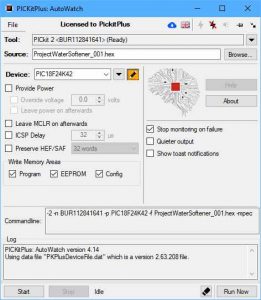Summary of PICKITPLUS NOW RUNS ON LINUX – THE SOFTWARE THAT USES THE MICROCHIP PK2 AND PK3 TO PROGRAM NEW AND LEGACY MICROCONTROLLERS FROM MICROCHIP.
The article announces the release of PKCMD-LX, the Linux version of the PKCMD software designed to program Microchip PIC microcontrollers using PK2 and PK3 programmers. PKCMD-LX runs on both 32 and 64-bit Linux systems and is distributed as an AppImage, ensuring compatibility across many Linux distributions without system modifications. This command-line tool is suitable for developers and professionals, offering easy script integration and portability, as AppImages can run directly from USB drives on different machines.
Parts used in the PKCMD-LX Project:
- Microchip PIC microcontrollers
- Pickit 2 device programmer
- Pickit 3 device programmer
- PKCMD-LX software (AppImage format)
We are very pleased to announce the release of the Linux version of PKCMD: PKCMD-LX. This is the Personal Computer version, designed to run on flavours of Linux, both 32 and 64 bit. This was a huge investment by us. But, these are exciting developments for the software as it shows what can be with the PK2 and PK3 programmers!

PKCMD-LX can be used for reading and writing Microchip’s PIC range of microcontrollers, using the Pickit 2 or Pickit 3 device programmers. PKCMD-LX provides the best experience for the Linux user, developers and the professional developer community, and as a command-line utility is can be easily integrated into users scripts.
Distribution
PKCMD-LX is distributed as an AppImage. Using an AppImage enables the development team to provide native binaries for Linux users the same way we do for other operating systems. An AppImage enables the development team to package the PKCMD-LX application for common Linux operating systems, e.g., Ubuntu, Debian, openSUSE, RHEL, CentOS, Fedora etc.
The PICKitPlus AppImage comes with all dependencies that cannot be assumed to be part of each target system and will run on most Linux distributions without modifications.
Almost all major distributions are compatible with AppImages, without requiring the user to make modifications to the base system. AppImages are portable. Users can place the AppImage on a USB flash drive and run it from there, on any machine, as the users wish.
